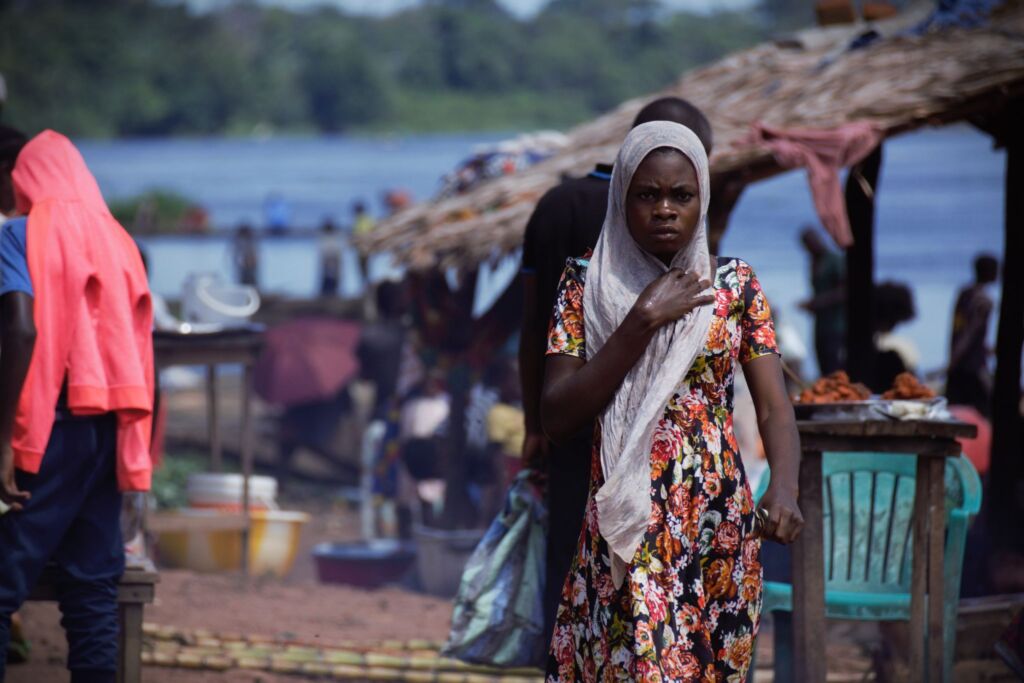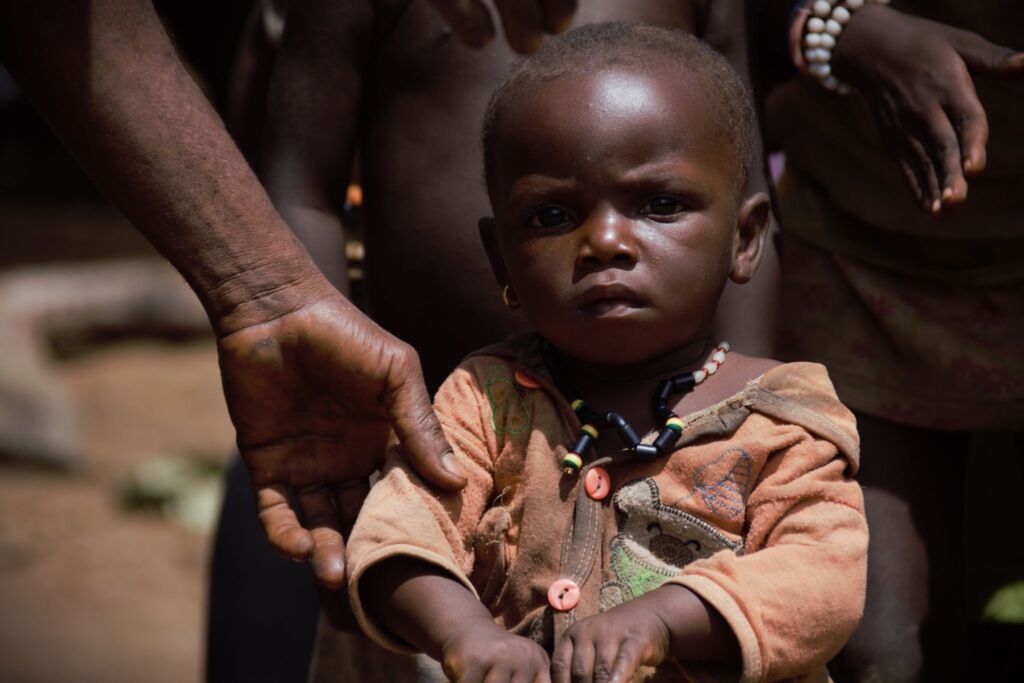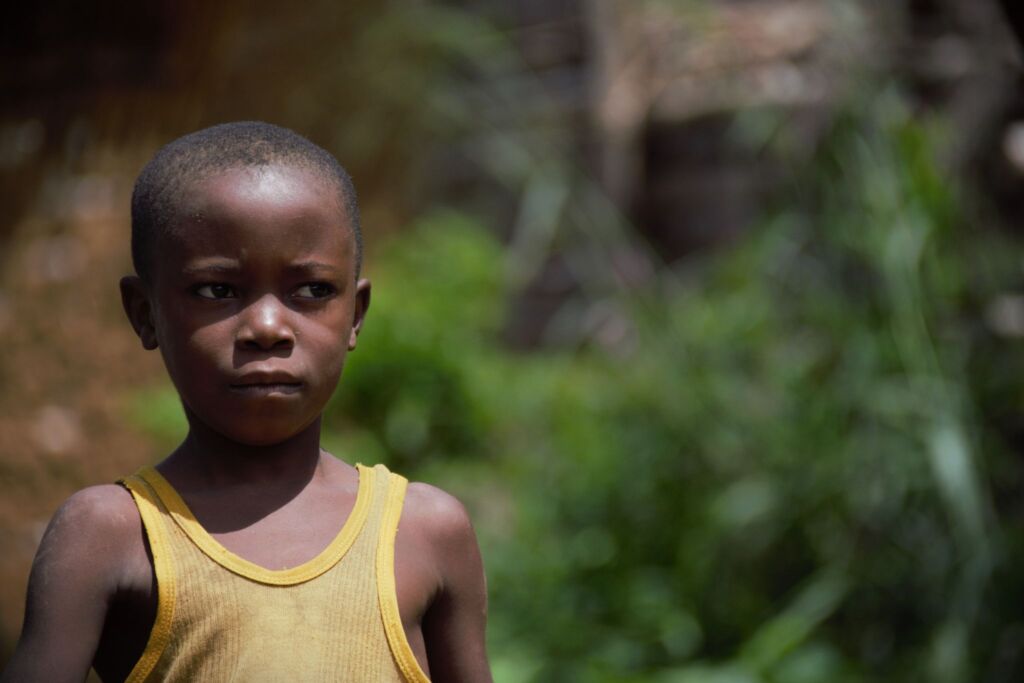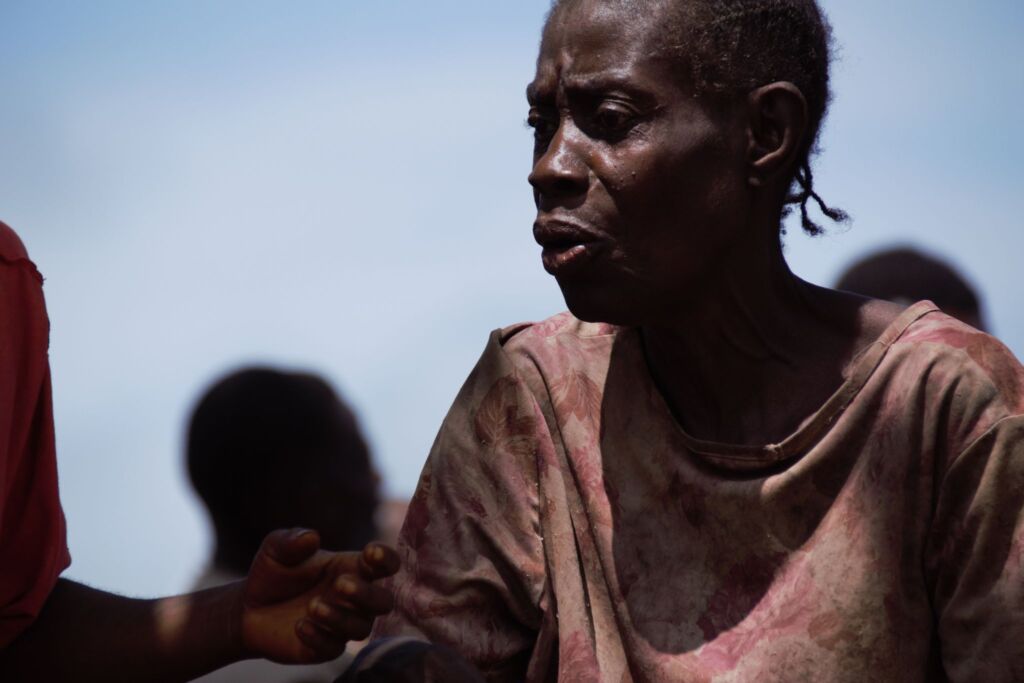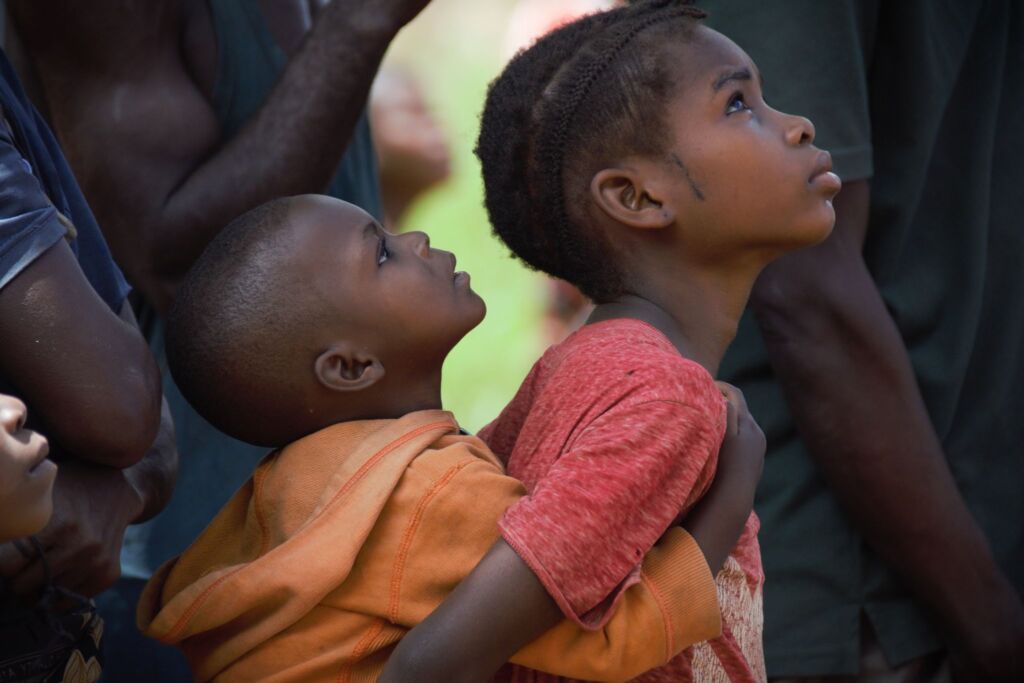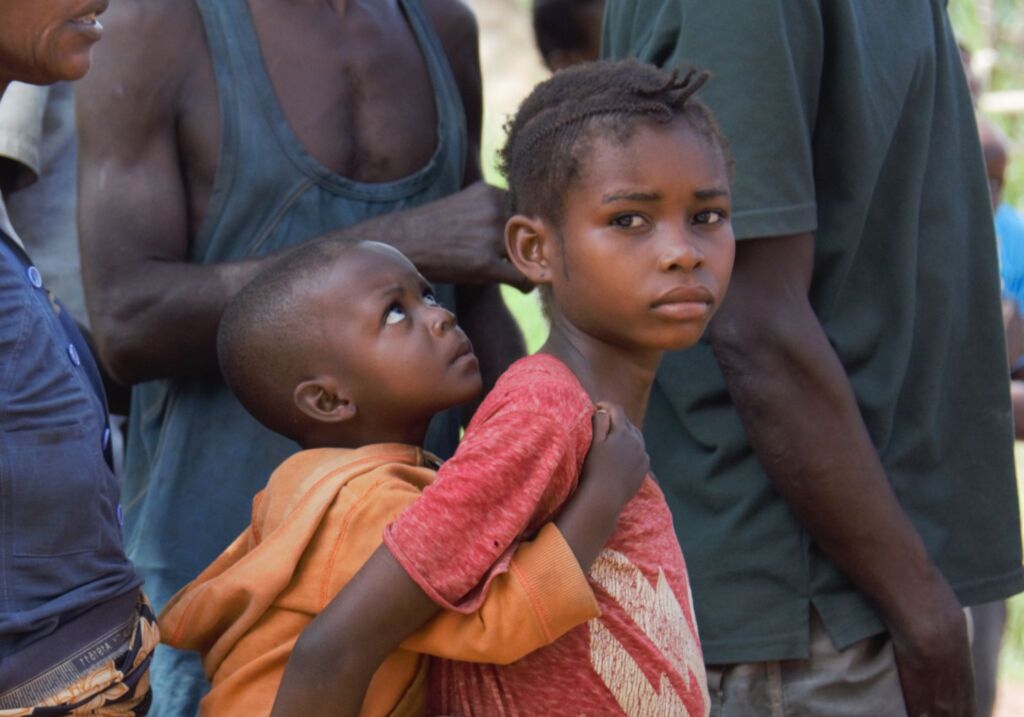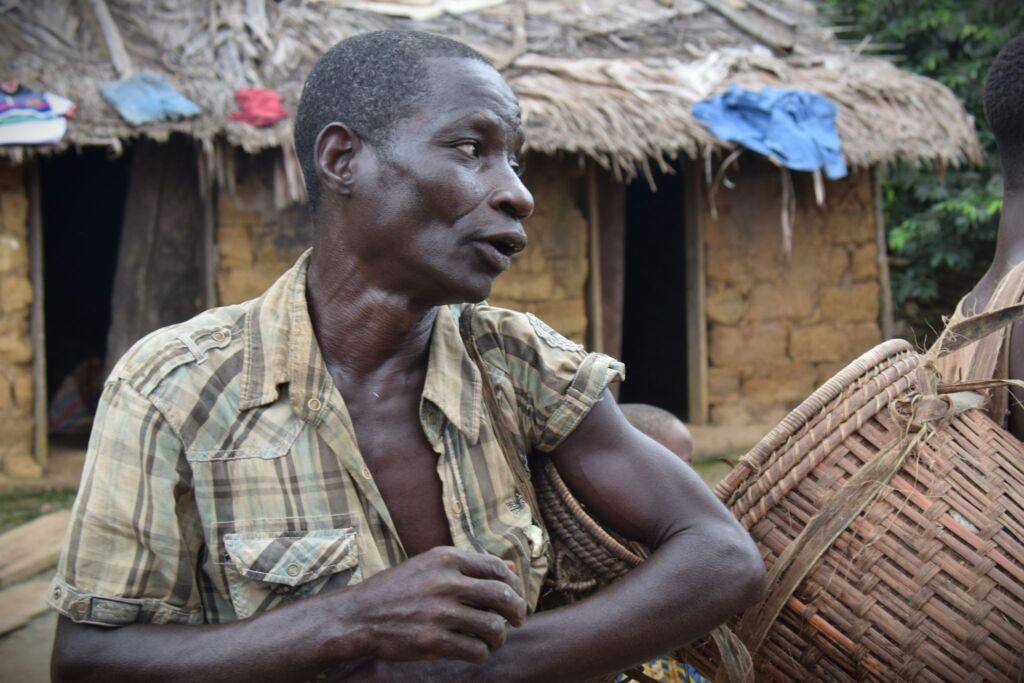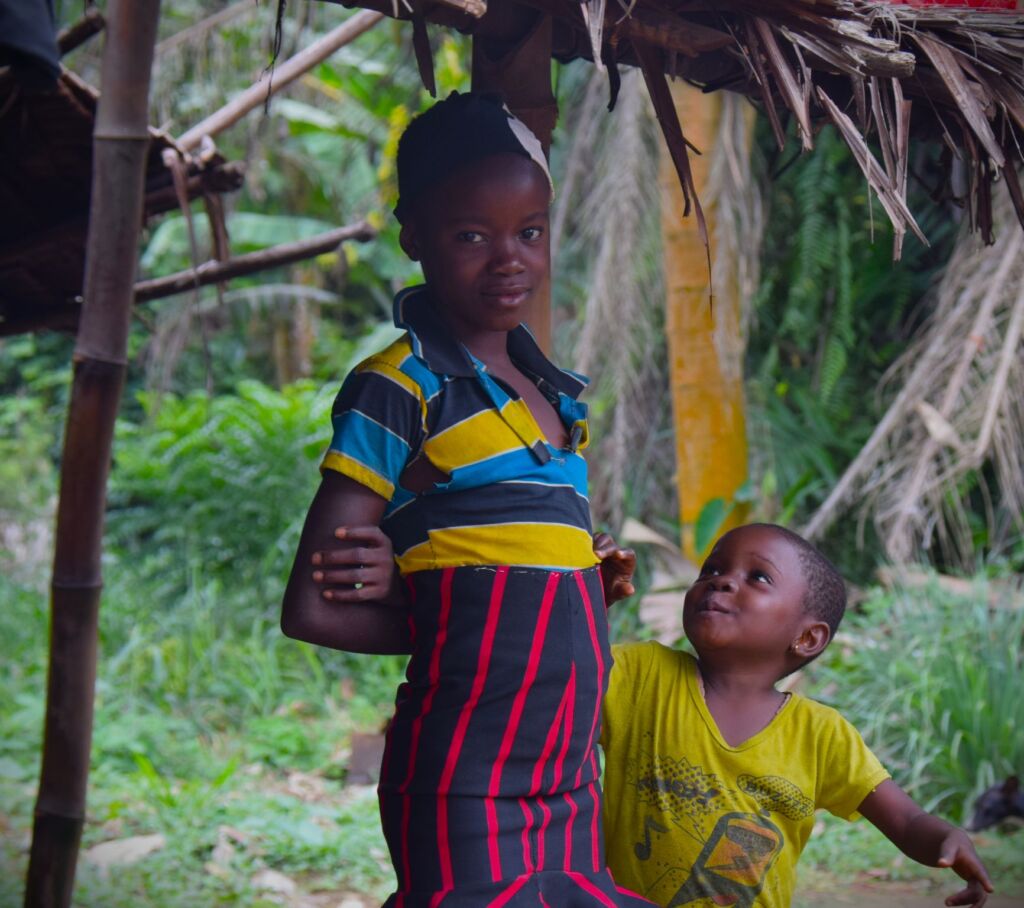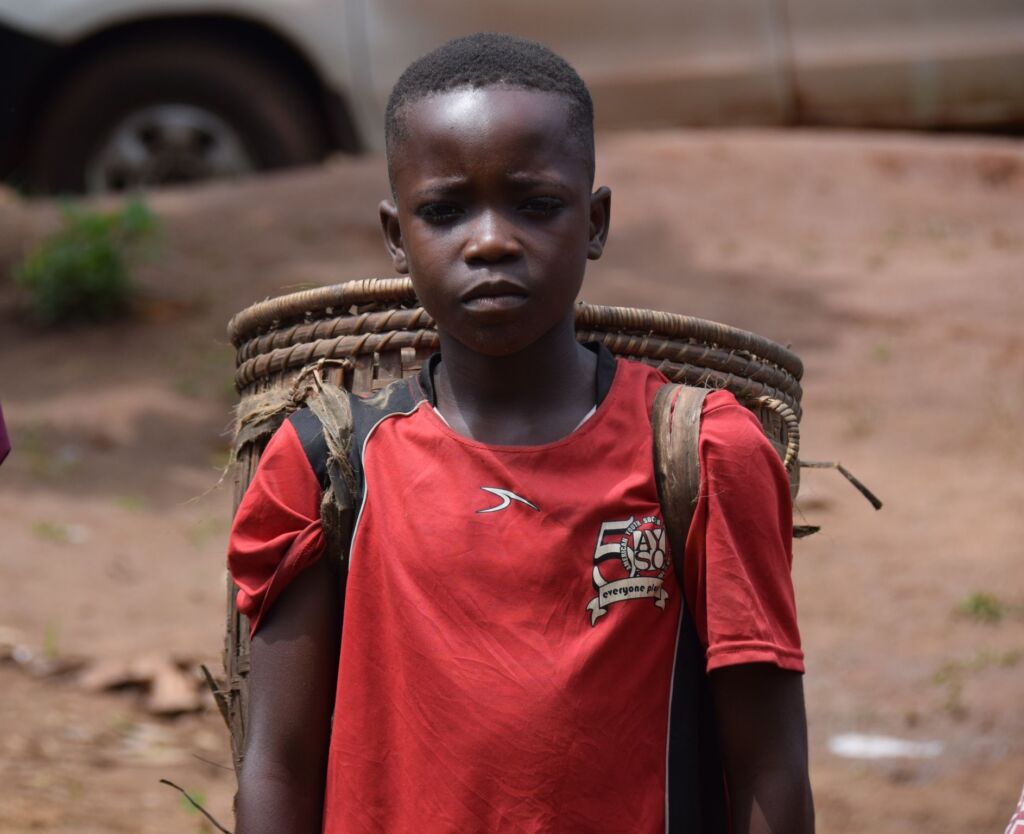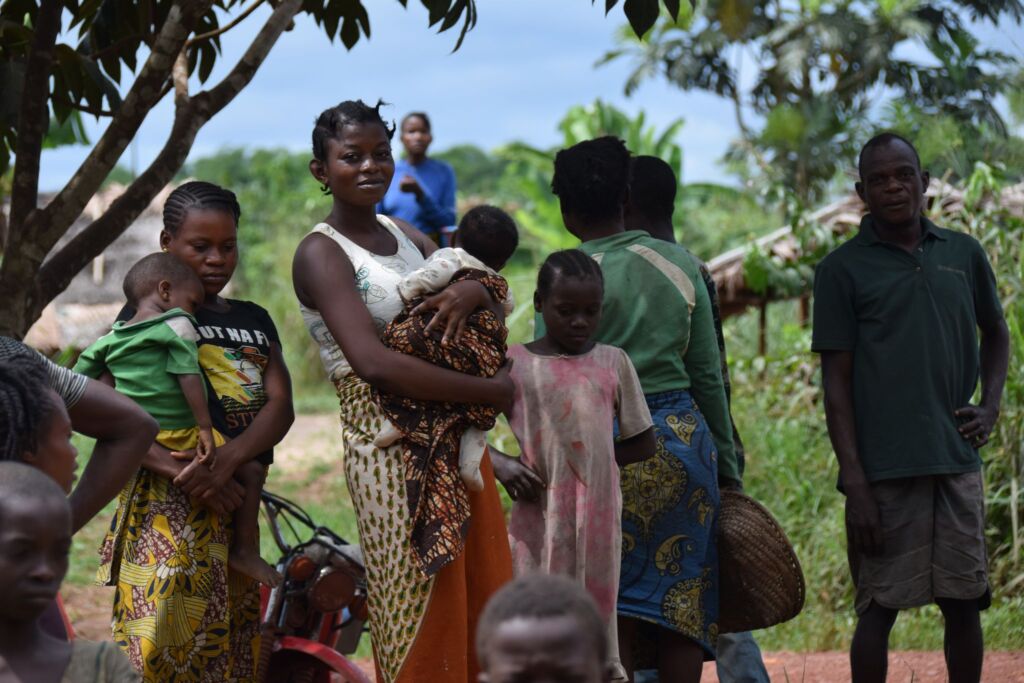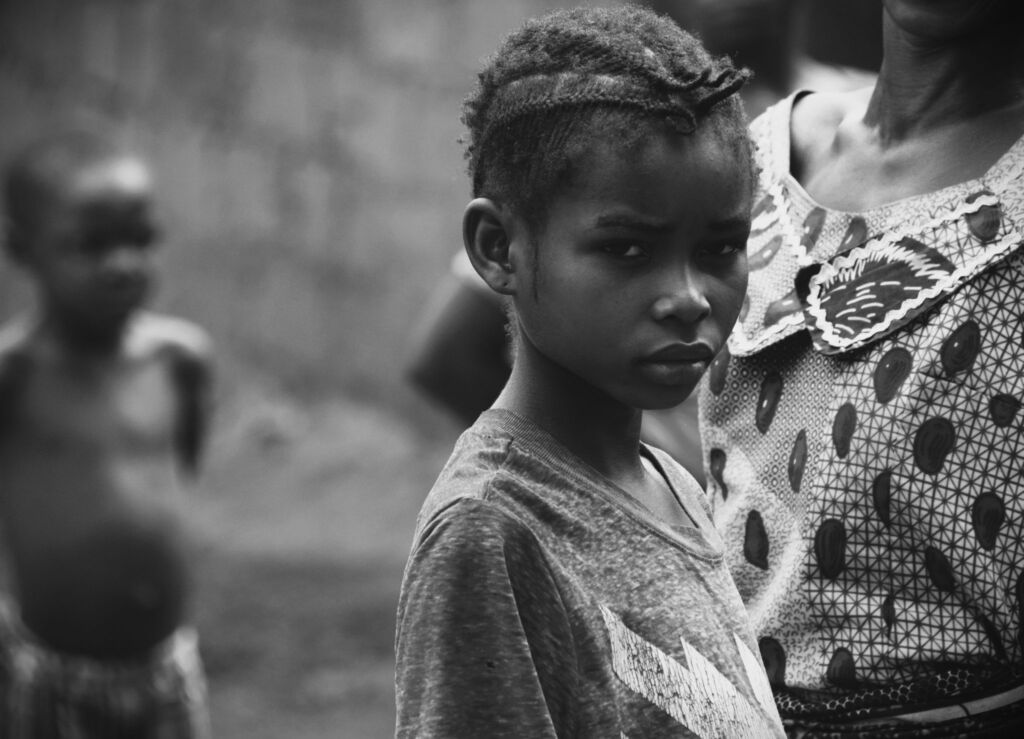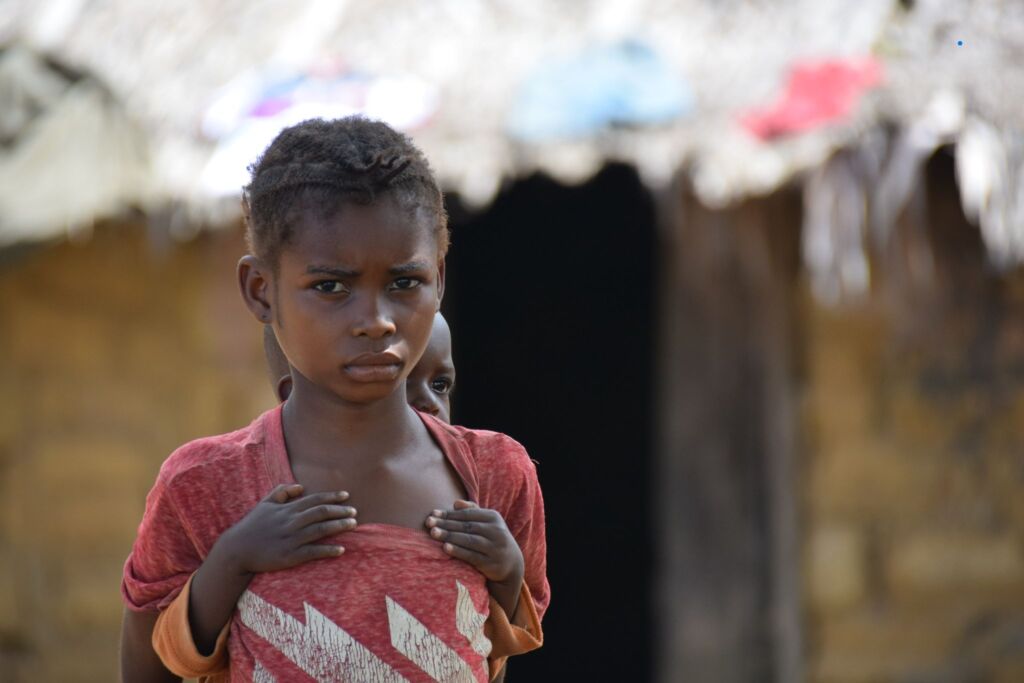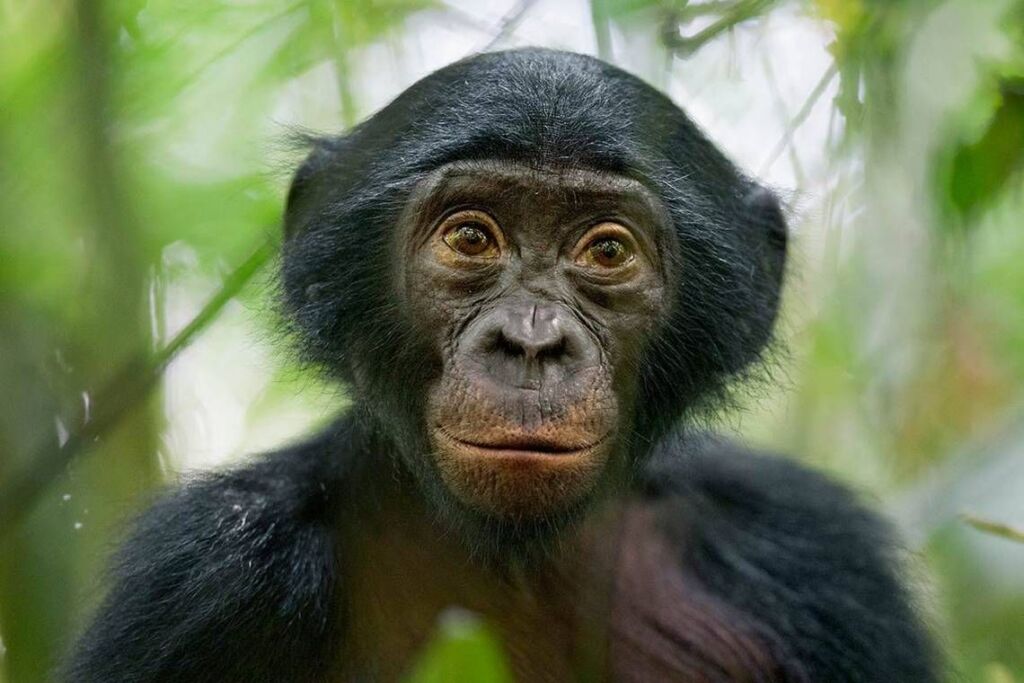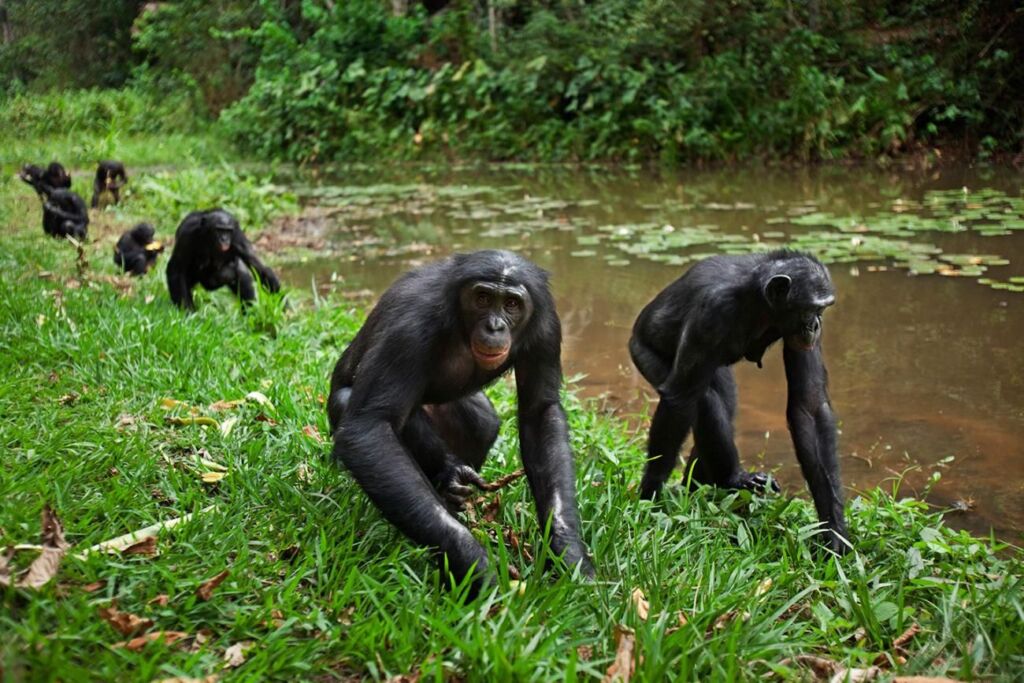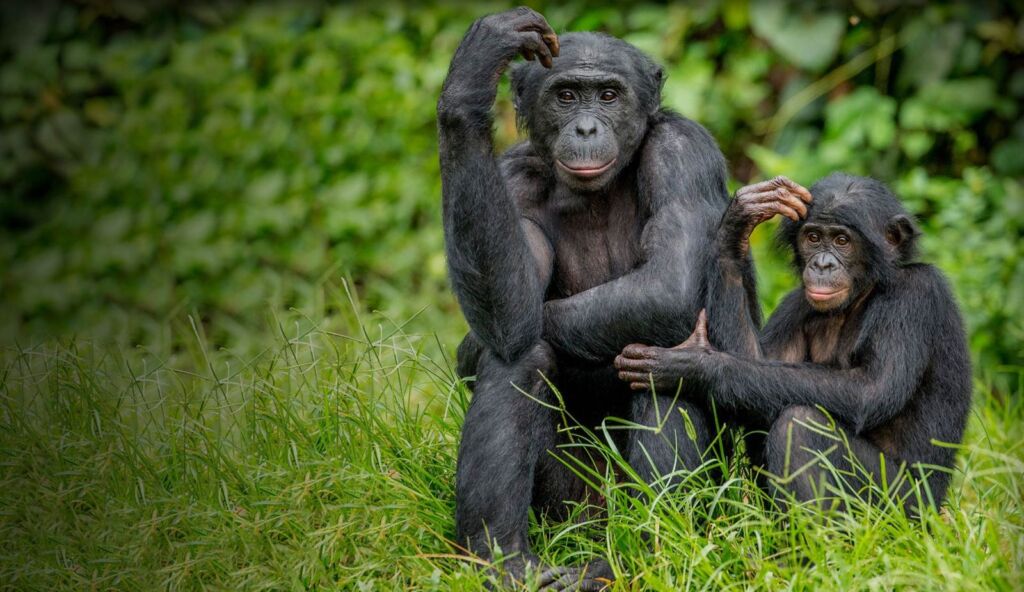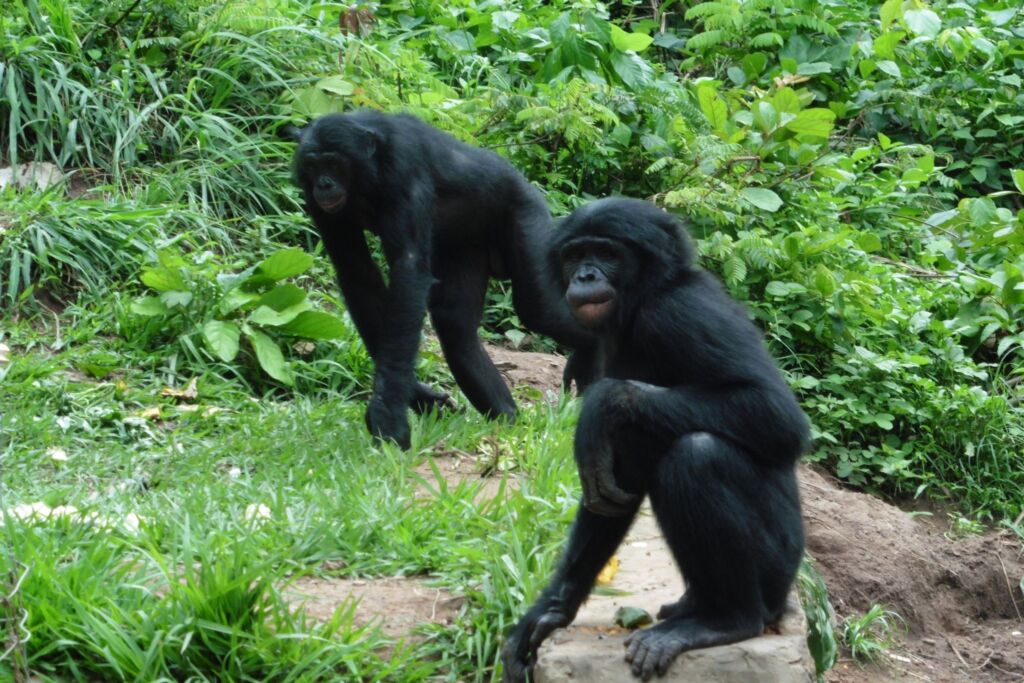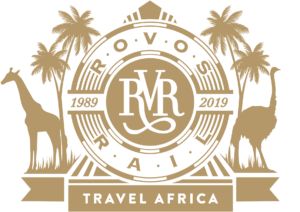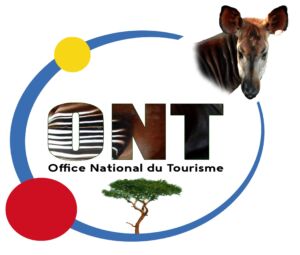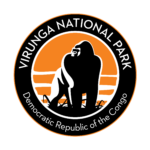We at Congo Travel and Tours are proud to say we’re the only agency offering wild bonobo tours. Don’t let yourself be fooled by copycats claiming they can offer this as we’re so far the only agency with access to the site and who work closely with the locals! This tour will give you an insight into the bonobos habitat, the local conservation efforts, everyday village life in the forest and also is a great introduction to the Congo River. After the bonobo visit, we will continue our way to Mbandaka, a charming little city on the Congo River. After a brief introduction, we’ll spend a few days among the pygmees at a few villages in the Equateur.
Our tour will start in Kinshasa from where we’ll take the boat on the Congo River, we will arrive in the late evening and stay at a simple accommodation. The day after we’ll drive to the site, where we will stay three nights in total. Our packages include two bonobo visits and we’ll also visit local initiatives. It’s possible to add a third bonobo visit for a fee. After our bonobo adventure, we’ll continue our way on the Congo River to Mbandaka. Mbandaka is one of the largest cities in the republic and is the capital of the Équateur province. It’s just a few kilometers north of the equator, located on the east bank of the Congo River at an altitude of 370 m near the mouth of the Ruki. Its population is almost 1.2 million people.
Before diving into pygmy culture, we will stop at the equator sign to take a nice picture and the next three days we’ll be getting a full immersion at the villages. We’ll be sleeping in a tent, eating basic local meals and will join the villagers in their daily activities. We will fly back from Mbandaka to Kinshasa.
Please, know that this is an expedition, you will be in basic accommodation and camping during your stay and eat simple, local meals. At the pygmy villages there is no electricity or running water. We will have to wash ourselves at the river, just like the locals do. Mbandaka is in a malaria-zone, so please, bring a mosquito net, DEET, have long pants with you and make sure to protect yourself from the sun (sunscreen, sunglasses, hat). Bring a torch, plenty of batteries and powerbanks, make sure to have back up snacks and plenty of water (from Kinshasa and Mbandaka) and have appropriate clothing as well as sheets, a mattress, towels and your own tent.
Itinerary (will depend on the flight schedule between Mbandaka and Kinshasa)
We recommend you to take at least two to three buffer days in Kinshasa in case of any flight delays. We are not responsible for you missing your flight back home due to ignoring our advice!
Day 1: Arrival in Kinshasa
Pick up at the international airport of N’djili and transfer to your hotel in Kinshasa.
Day 2: Boat transfer on the Congo River
We’ll pick you up at your hotel and bring you to the boat. You’ll have a wonderful trip on the mighty Congo River and you immediately get a wonderful first impression of this huge country and life on and along the Congo River. We’ll be staying at the village tonight.
Day 3: Transfer to the site and first bonobo tracking
We’ll transfer you to our site and today you’ll have your first bonobo tracking! Know that it can sometimes take a while to find the bonobos. Make sure to have good shoes and bring plenty of water for your trip. Be sure to wear long pants and protect yourself against the sun and mosquitoes. We’ll also ask you to bring a mouth mask to not transmit any diseases to the bonobos.
Day 4: Second bonobo tracking
Second bonobo tracking today.
Day 5: Explore the area
Today you’ll get to explore more of the area and visit some local initiatives and the bush.
Day 6: Boat transfer to Mbandaka
Boat transfer to Mbandaka on the Congo River today. We’ll stay at a local hotel and we’ll go to a restaurant tonight to have some hearty food and cold drinks before going into the bush again. Last chance to stock up on drinking water and snacks!
Day 7 to 9: Pygmy tribes
Three days of full immersion at the village. We’ll be living among the tribe and join them during their activities. Very few outsiders have gone here before you!
Day 10: Back to Mbandaka
Long road back to Mbandaka today where we will relax and have a peaceful night at the hotel.
Day 11: Flight to Kinshasa
A short, but beautiful flight over the forest and the Congo River to Kinshasa. Check in at the hotel.
Day 12: Kinshasa City Tour
Full city tour with visit of the Congo Rapids, local textile markets, walk around the Congo River in the center, Académie des beaux arts, the cathedral of St Anne and much more.
Day 13: Departure
Departure date, although we recommend adding at least a few buffer days here in case of delays!
Included:
– Accommodation
– All activities and entrance fees according to the program
– Professional guide
– Transportation
Not included:
– Meals and drinks in Kinshasa and Mbandaka
– Airport tax ($55, payable on departure)
Bonobos
Bonobos and chimpanzees are very similar and both share 98.7% of their DNA with humans, making the two species our closest relatives. Bonobos are generally smaller, leaner, and darker in color than chimpanzees. Their society is also different: groups of bonobos tend to be more peaceful and led by women. They also maintain relationships and resolve conflicts through sex. However, the life of bonobos is not entirely free from violence; when two groups of bonobos meet, they can fight seriously.
Wild bonobos are only found in the forests south of the Congo River in the Democratic Republic of Congo (DRC). Also known as the pygmy chimpanzee, bonobos were not recognized as a separate species until 1929. As the last great ape to be scientifically described, much is still unknown about the bonobo, including the extent of its geographic range. Attempts to research the species over the past two decades have been hampered by the remoteness of its habitat, its patchy distribution, and years of civil unrest in the Democratic Republic of the Congo.
Civil unrest and poverty in the bonobo region have contributed to poaching and deforestation. Although the size of the bonobo population is largely unknown, it has likely declined over the past 30 years. Scientists believe the decline will continue for the next 45 to 55 years due to the bonobo’s low reproductive rate and increasing threats.


